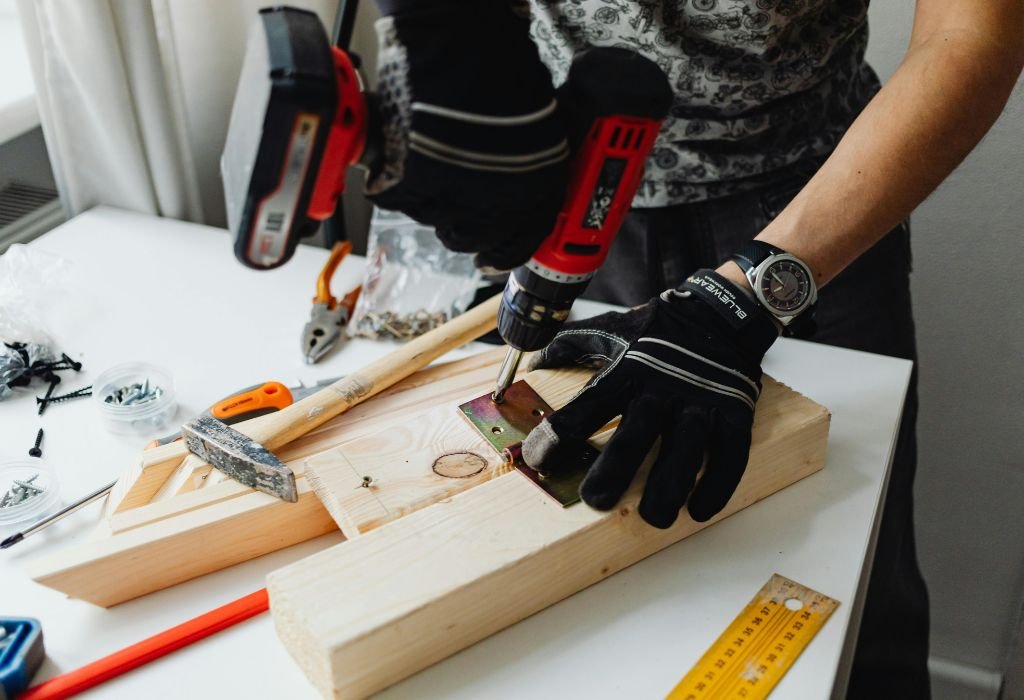rying to drill into concrete with a regular cordless drill often ends in frustration.
Many homeowners discover their tool stalls, overheats, or fails to penetrate the surface at all.
This common problem raises the question: what is a cordless hammer drill, and why does it matter?
A cordless hammer drill combines rotation with a powerful hammering motion that breaks through dense materials.
This unique mechanism makes it far more effective than standard drills when working with masonry, stone, or reinforced concrete.
According to market research, cordless power tools are projected to reach over $45 billion by 2030 due to growing demand source.
This growth highlights how essential cordless hammer drills have become for both professionals and DIY enthusiasts.
Knowing what a cordless hammer drill is and when to use it can save time, money, and frustration.
This article explores the definition, uses, benefits, limitations, and tips for getting the most out of this versatile tool.
What Is a Cordless Hammer Drill?

A cordless hammer drill is a power tool designed to combine standard drilling with a hammering action.
This dual function allows it to break through materials that are too hard for a regular drill.
The hammering motion works by rapidly pulsing the bit forward while it rotates.
This creates a chiseling effect that makes drilling into masonry, stone, or concrete much easier.
Cordless models run on rechargeable batteries, giving greater freedom of movement.
Without power cords, they are more convenient for jobs in tight spaces or outdoor environments.
Modern cordless hammer drills often include multiple modes, letting users switch between regular drilling and hammer drilling.
This versatility makes them useful for both everyday DIY projects and demanding construction tasks.
Is a cordless hammer drill different from a normal drill?
Yes, it combines rotation with hammering power, making it better for hard surfaces like concrete or brick.
How does the hammering action work?
It delivers rapid impacts along with rotation, helping the bit penetrate dense material more effectively.
Can cordless hammer drills be used on wood or metal?
Yes, they can function like a standard drill when the hammer mode is turned off.
Are cordless hammer drills suitable for beginners?
Yes, they are user-friendly and often come with adjustable settings for different materials.
What Is a Cordless Hammer Drill Used For?
A cordless hammer drill is primarily used for drilling into hard materials like concrete, stone, and masonry.
This makes it an essential tool for construction work, renovations, and heavy DIY projects.
It is also used to drive fasteners or anchors into walls where a standard drill would fail.
The hammering action ensures screws and bolts hold firmly in tough surfaces.
Cordless hammer drills can be used for lighter tasks as well, including drilling into wood or metal.
When the hammer mode is turned off, they act like regular cordless drills.
These drills are especially valuable for outdoor projects where access to power outlets is limited.
Battery technology now allows them to perform nearly as well as corded models for most tasks.
Can a cordless hammer drill drill wood?
Yes, when the hammer function is disabled, it works like a regular drill for wood or metal.
Is it good for home DIY?
Yes, it is versatile enough for small home projects like shelves, wall anchors, or repairs.
Can it replace a rotary hammer?
Not completely, as rotary hammers are stronger and designed for heavy industrial jobs.
Is a cordless hammer drill useful for professionals?
Yes, contractors use them for quick, medium-duty drilling where portability is important.
Benefits of Using a Cordless Hammer Drill

The main benefit of a cordless hammer drill is its ability to work where other drills cannot.
It handles dense materials easily while still offering the portability of a cordless design.
Users save time because the hammer action speeds up drilling into hard surfaces.
This reduces strain on both the user and the drill bit.
Cordless hammer drills also provide greater convenience by eliminating the need for extension cords.
They are ideal for work on ladders, rooftops, or outdoor sites.
With adjustable speed and multiple modes, one tool can replace several others.
This versatility makes it cost-effective for both professionals and homeowners.
Is a cordless hammer drill powerful enough for concrete?
Yes, for light to medium-duty concrete drilling, but heavy demolition still requires a rotary hammer.
Do they come with adjustable speeds?
Yes, most cordless hammer drills include variable speed settings for better control.
Are they worth the investment?
Yes, they provide portability, versatility, and reliability in most drilling applications.
Do they reduce strain on users?
Yes, the hammer action helps reduce effort compared to forcing a normal drill through hard surfaces.
Limitations of Cordless Hammer Drills
Cordless hammer drills, while versatile, do have limitations compared to corded tools.
They generally deliver less power and shorter run times.
Battery life can be a concern during long or heavy tasks.
Frequent charging or carrying spare batteries may be necessary for extended projects.
They are also heavier than standard cordless drills due to the added hammering mechanism.
This extra weight can cause fatigue during long periods of use.
For industrial-grade jobs or heavy demolition, a rotary hammer or SDS drill is still recommended.
Cordless hammer drills are designed more for medium-duty applications.
How long does a battery last?
Depending on use, most batteries last from 30 minutes to a few hours.
Are they suitable for industrial work?
No, larger rotary hammers are better suited for continuous heavy-duty drilling.
Do they require special drill bits?
Yes, masonry-rated bits are needed when using the hammer function.
Are cordless hammer drills heavier than normal drills?
Yes, the extra mechanism adds weight, though it improves performance on tough materials.
Tips for Using a Cordless Hammer Drill Safely
Always use the correct drill bit for the material being worked on.
Using the wrong bit can damage the tool or create unsafe results.
Start at a lower speed and then increase gradually.
This provides more control and prevents slipping or breaking bits.
Wearing protective gear such as safety glasses and gloves is strongly recommended.
Flying debris and vibrations can create risks during drilling.
Maintain your batteries by charging them fully and avoiding complete discharges.
Proper care extends both tool life and battery performance.
Do you need safety gear when using a hammer drill?
Yes, safety glasses, gloves, and sometimes ear protection are necessary.
Can the drill overheat?
Yes, it may overheat during extended use, so allow it to rest when needed.
How do you extend battery life?
Avoid draining batteries completely and always recharge them fully.
Should you press hard on the drill?
No, let the hammering action do the work, applying only steady pressure.
Conclusion
A cordless hammer drill is a powerful and versatile tool that bridges the gap between standard drills and heavy rotary hammers.
It combines rotation with a hammering action, making it perfect for concrete, masonry, and other dense materials.
While not designed for heavy demolition, it excels in light to medium-duty construction and home improvement tasks.
Its cordless design provides mobility and convenience unmatched by corded tools.
Understanding what is a cordless hammer drill and how to use it properly prevents costly mistakes and wasted effort.
With the right bit, calibration, and safety gear, it becomes an essential tool for both professionals and DIYers.

I’m John F. Nicholas, the founder, lead writer, and drill enthusiast behind 101drill.com. With years of hands-on experience in power tools and DIY projects, I created this platform to share practical knowledge, expert tips, and real-world insights to help others master the art of drilling.
